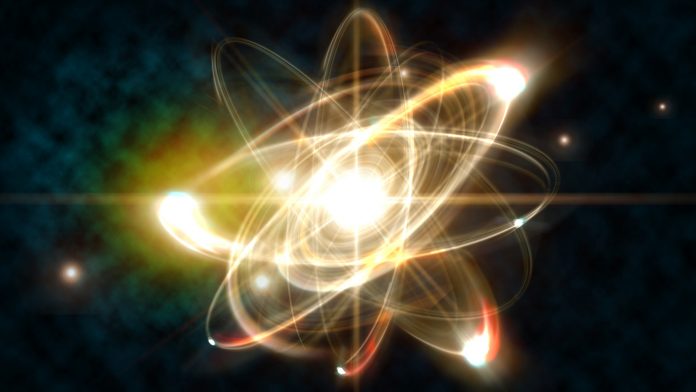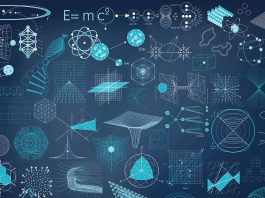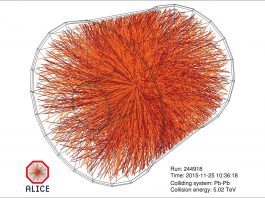Professor Vladimir Zelevinsky from Michigan State University describes his journey in nuclear physics, from student life in Moscow to family life and a successful career in the USA.
When I am asked what I am doing on any given day, my answer varies depending on the person asking the question, with my typical replies being either “science” or “teaching”. In fact, these two types of everyday activity are indissolubly coupled, and so it is perhaps best that I start almost from the very beginning; not from my birthday, but from my student years at Moscow State University.
My student specialisation was theoretical physics. This is, of course, too broad and does not say anything about specific topics of interest. My diploma work (the final part of my university course which, in total, took five and a half years and which is probably equivalent to the Master’s thesis in the USA), centred on an interesting phenomenon found in the mixture of two helium isotopes, 3He and 4He. A uniform mixture of these two liquids (at very low temperature) undergoes a transition into a two-layer liquid with different concentrations of these isotopes in two halves. The problem was to find the equilibrium concentration of these two liquids as a function of temperature. I made some predictions which later, with new experiments, turned out not to be entirely correct. This was my first scientific publication, but in a second-tier journal.

Having learnt that the Soviet Union had recently signed an international convention which banned forced labour, I was able to leave the military-oriented institution to which I had been sent and so look for a job in science
I was then ready to go to the ‘aspirantura’ (to work on the thesis, equivalent to a PhD) at the Institute of Physics of Academy of Sciences (FIAN), but the vigilant personnel clerks did not allow this. Instead, they sent me to a closed military-oriented institution. There, I worked in a small office with an older boss and ten other, mainly young, people who spent their formal working hours just chatting and, from time to time, rotating a handle of a primitive ‘computer’ called an ‘arithmometer’. This became unbearably boring very quickly, and so I asked a more senior member of staff for permission to attend a physics seminar once a week at FIAN. My request, however, was immediately refused.
I then learned that the Soviet Union had recently signed an international convention which banned forced labour. I therefore handed in my resignation (under previous laws I would have been required to stay there for at least three years) and, after two weeks, stopped attending. My law-abiding parents were naturally concerned that I may be arrested and sent to prison but, luckily, I retained my freedom although, for several months, I was unable to find a job in science. My good luck came in the guise of a great physicist and very pleasant person, Victor Galitsky, who, for some reason, had liked my first publication.
After a few unsuccessful attempts to help me find work, Galitsky introduced me to his colleague at the Kurchatov Institute, Spartak Belyaev. This was the most notable piece of good fortune I had experienced in my life thus far, and I became Belyaev’s graduate student (or ‘aspirant’). Belyaev was not just a first-class scientist but also a great person by all human criteria. Sadly, he recently passed away and his obituary was printed in Physics Today in June 2017. I was his first aspirant, and he suggested that I work on theoretical problems of nuclear structure.
My knowledge of nuclear physics, however, was close to none; I had completed only one semester of nuclear physics at the university, and that did not go beyond a deuteron (the simplest nucleus, one proton + one neutron). My starting problem was to describe the collective vibrations of a heavy nucleus as a many-body system. Looking back, it was perhaps good to be able to start from scratch with no pre-conceived ideas and, indeed, this presented me with the opportunity to learn many new things, including superconductivity (as heavy nuclei are essentially quantum drops of superconducting matter), and a special area of quantum theory – the coupling of many angular momentum vectors of individual particles. I was very lucky to get into a boiling cauldron of nuclear physics, with outstanding physicists Valentin Vaks and Anatoly Larkin and the whole command of my age under the great leadership of Arkady Migdal. There is no doubt that the Kurchatov Institute’ was the centre of nuclear science in the Soviet Union that time.
Nuclear theory
Our first paper with Belyaev on the physics and mathematics of collective nuclear vibrations appeared in the main Soviet scientific journal JETP (a simplified model) and then, in a more developed form, in the main international journal Nuclear Physics. The approach we used combined the quantum equations of motion with the ideas of superconductivity and corresponding pair correlations of particles in a nucleus. It is still called the ‘Belyaev-Zelevinsky method’ and this was how I came to be involved in nuclear theory.
After one year at the Kurchatov Institute, Galitsky and Belyaev were invited to move to Siberia where the Institute of Nuclear Physics had emerged as one of the main institutions of the brand new Novosibirsk Scientific Center. Kurchatov had been able to create this institution in an effort to realise the enormous concentration of ideas coming from the scientific genius of Gersh Budker, who became the Director of the new institute (which is currently named the Budker Institute of Nuclear Physics, or BINP). Galitsky, Belyaev, and Roald Sagdeev (who was later to become the Director of the Institute of Cosmic Studies in Moscow) headed up the theoretical studies at the new institution, which had the main goals of building the first high-energy electron colliders and a new arrangement for thermonuclear plasma.
The Budker Institute
I too was invited to move to Siberia, and I agreed almost immediately. There was something of a gold rush at this time in terms of the development of fundamental science on Siberia. The new town of Academgorodok (which is formally just a district of the third largest Soviet city in terms of population, Novosibirsk, but located 20 miles from the centre) was full of young and enthusiastic scientists, all of whom were approximately the same age; it had its own lifestyle and an intellectual freedom that was absent in the old centres.
The Budker Institute lived by the unwritten laws of ‘disordered democracy’, far away from Moscow’s authorities. A famous round table was put in the centre of a hall and each day a group of specialists in a certain topic gathered at noon in order to discuss, over a cup of coffee, the burning topics of the day; on Wednesdays, this was the coffee hour for the Institute’s council.
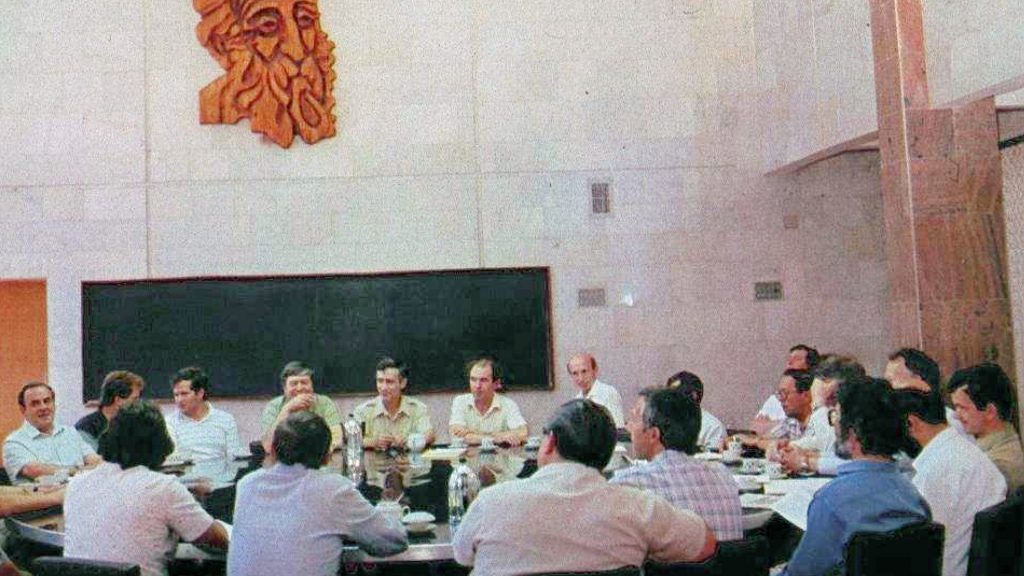
The atmosphere was extremely democratic and it was quite possible to raise objections to the Director. Of course, over time, the existence of this exceptional institution, which was unique in Soviet life, became immersed in the Soviet reality, becoming a singularity as the entropy grew to equilibrium. However, even under pressure some amazing features of this unusual life survived for a long time as the Institute was, to some degree, protected by the worldwide fame it had garnered as a result of its success in colliding beams and plasma physics.
Our nuclear theory group was just a small part of the Institute’s activity, but we were making progress and generating interesting results in the physics of collective motion, in particular with regards to unifying the description of vibrational and rotational motion. In parallel, nuclear experiments started at BINP under the leadership of Stanislav Popov, who regrettably passed away at a relatively young age. His group constructed and put into action a special facility for nuclear experiments: an electron storage ring where the circulating accelerated electrons collided with the super-thin jet of nuclei under study. As the electrons do not feel nuclear forces, so the interaction is purely electromagnetic, which facilitated the interpretation of the results. To briefly mention the results for the oxygen jet: the nucleus can be split into various fragments, including the channel, with four alpha particles (helium nuclei). This shows that the oxygen nucleus, being made of eight protons and eight neutrons, has in its structure a certain probability of 4 alpha-cluster configuration. It is quite similar to the famous Hoyle state in the carbon nucleus (six protons and six neutrons), and both cases may play an important role in astrophysical nuclear reactions synthesising heavy elements. Later, during the time of Gorbachev’s ‘perestroika’ (restructuring), such experiments enabled contacts to be developed with the group of American physicists working at the Argonne National Laboratory. At that time, the main topic was the electromagnetic structure of the aforementioned deuteron. Regrettably, the whole facility was deactivated in the 1990s.
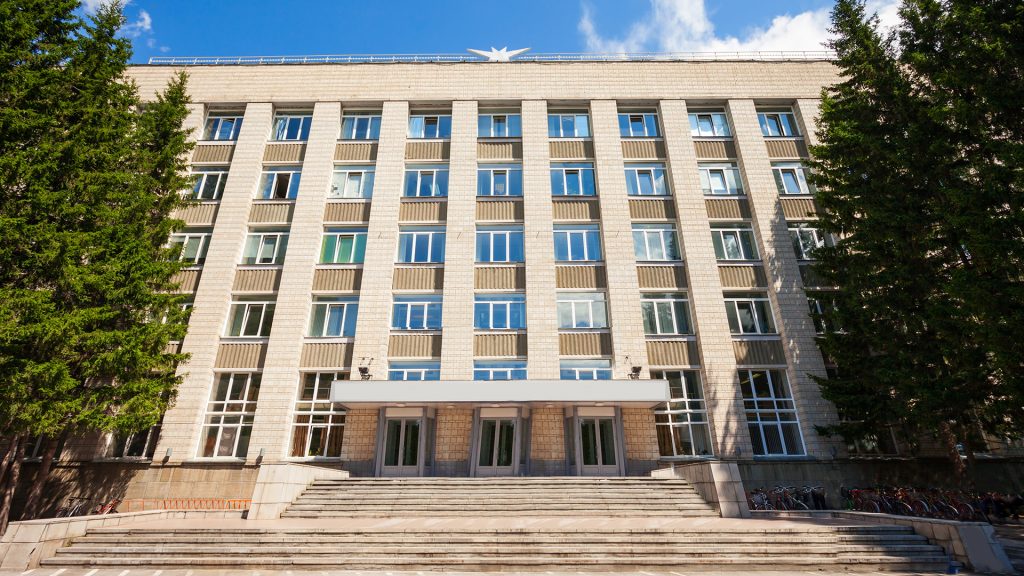
Upon moving to Siberia, I found the new town of Academgorodok, which had only been designated as a district of the city of Novosibirsk, to be located 20 miles from the city centre. It was full of young and enthusiastic scientists approximately of the same age; it had its own lifestyle and an intellectual freedom that was absent in the old centres
Teaching
In parallel, my teaching work started at the new Novosibirsk University situated in Academgorodok; soon after, Spartak became a member of Soviet Academy of Sciences and rector of this University. From the beginning, I was required to teach quantum mechanics, something that was very useful in enabling me to both progress my own education and develop a certain educational style. Much later, this style resulted in me publishing two volumes of Quantum Physics (Wiley, 2011).
The difference between the Novosibirsk University and typical American universities is that the mean level of Siberian students at that time was noticeably higher as many of them came through preliminary selection at scientific Olympiads and the specialised high school for physics and mathematics in Academgorodok. My book included the introductory topics and their development up to certain special applications, as the idea was to provide teachers with the opportunity to choose special subjects for a given audience. Later, I taught many other theoretical courses, while my old friend Professor Gleb Kotkin developed the computational practicum (unfortunately, he died as a result of the COVID-19 pandemic in 2020).
For many years I served as the Head of Theoretical Physics at Novosibirsk University, where it was a great pleasure to interact with the teachers who gradually became younger than me.
International collaboration
For a long time, my relations with physicists from abroad were limited to a couple of tourist trips, publications in international journals, and short personal acquaintances with rare visitors. Spartak had very good connections with the Niels Bohr Institute (NBI) in Copenhagen, and towards the end of the 1950s he spent a year there writing his famous paper on superfluid pair correlations in nuclei. He also maintained friendly relationships with the leaders of nuclear science Aage Bohr and Ben Mottelson, the former of whom visited the Budker Institute and so we were able to get acquainted. After that visit, Bohr invited me to the NBI each year, but every time I was not allowed to accept. Finally, the permission came after Spartak took me with him for a month long trip to visit scientific centres in Germany at the invitation of Walter Greiner. As we returned home with no problems, I was allowed to travel to Denmark.
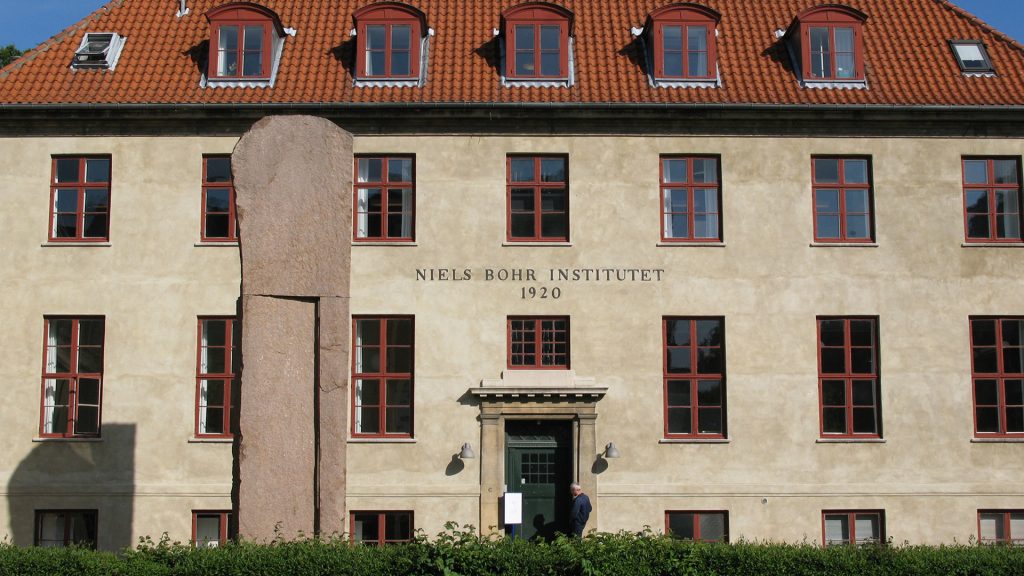
In 1979-1980, the Niels Bohr Institute (NBI) in Copenhagen was a genuine world capital of nuclear theory
1979-1980 was a memorable year spent in Copenhagen. My wife Vera and two small children were required to remain in Siberia (although Vera was finally allowed to leave the children with their grandmother so that she could visit me for a month). At that time, the Institute was a genuine world capital of nuclear theory, and it was great to become utterly absorbed into the NBI atmosphere of great science and friendly human relations, although I experienced some difficulties with the language as the NBI secretaries spoke normal conversational English while I knew only the language of Russian textbooks and physics papers. It was also a great pleasure to become acquainted with the famous physicist Rudolph Peierls who was visiting the NBI with his charming wife Eugenia (with her classical old Russian language). Unfortunately, our conversation topics were rather sad because of the Soviet invasion of Afghanistan and the persecution of Andrei Sakharov, though I was happy to be able to speak honestly and openly. In addition, I was close to some emigrant families and to Sergei Polikanov, a remarkable nuclear physicist forced to leave Dubna. At the same time, I worked practically alone on the background of discussions and seminars at the NBI, and this was nice with the feeling of really personal responsibility.
My next trip was to a conference in Lund, a Swedish city and old university across a straight from Copenhagen, with a strong group of nuclear physicists created by the late S G Nilsson. Nuclear theory was at the peak of its development while the meeting was taking place, and I made numerous new acquaintances. When leaving, I was asked to take a special medical pillow for an ill woman in Moscow. As I agreed and passed it on to her husband (who was a dissident shadowed by the KGB) it subsequently became out of the question for me to be able to take any trips abroad for several years.
Quantum chaos
Also at that time, nuclear theory acquired a new, rather unexpected, direction related to quantum chaos. It was already well known that the majority of realistic classical mechanical systems reveal chaotic behaviour with extreme sensitivity to initial conditions. One can solve the Newton equations with maximum precision but, after some time, this exact solution loses its meaning as the actual trajectory depends on the finite resolution of your calculations. This carries an important philosophical meaning: the mechanical behaviour is unstable and can, after some time, completely change its character. In an almost ideal billiard, for instance, small irregularities on the boundary may lead to the ball trajectories densely covering the whole internal space. Of course, this is extremely important for areas such as the weather forecast. The natural question was whether or not something like this exists in quantum mechanics. Quantum chaos does exist, as was established by pioneering work on small quantum systems by the group of young physicists at the Budker Institute under the leadership of a great scientist, Boris Chirikov.
A natural question then emerged concerning complex quantum systems. Here, the atomic nuclei – for which detailed information on their spectra of quantum levels is available – became a subject of interest. In fact, the first studies in this direction were conducted even before the Second World War by the Soviet physicist Isai Gurevich who attempted to understand what the regularities of spacings between neighbouring quantum levels of a nucleus were. More than 30 years later, Oriol Bohigas and his collaborators made an analysis of nuclear spectra using much richer experimental information. It emerged that the spectra, inside a certain class of states with the same values of exact constants of motion (like the total angular momentum and parity), reveal a typical picture, essentially the same as it would be for a spectrum of a certain class of random matrices, typically belonging to the so-called ‘Gaussian Orthogonal Ensemble’ (GOE). The mathematical theory of such matrix ensembles was developed by Madan Mehta and Freeman Dyson. I had a short personal interaction with Mehta when, on a family trip from Japan, they briefly stopped in Novosibirsk. Their little daughter spoke Hindi with her father, French with her mother, and Japanese with all the other people.
My current understanding of spectral regularities in complex spectra is that it is the simplest manifestation of quantum chaos. It is frequently said that quantum chaos is just a remnant of classical chaos, but it seems that the situation is actually the reverse: quantum chaos is a primary phenomenon; its development is unavoidable in typical systems of interacting quantum particles. With excitation energy growing, the density of energy levels grows due to trivial combinatorics. At high level density, even weak interactions become effectively strong, creating exceedingly complicated superpositions of quantum states.
There are two ways of characterising this situation. One can say that the system is thermalised, with no external heat bath but just due to intrinsic interactions (this is a modern way of justifying statistical thermodynamics). And on the other hand, one can speak about quantum chaos approaching the limit of random matrices. The two languages are complementary in their description of the same physical reality, and this theoretical construction is actually quite important for applications opening the class of intermediate systems between everyday macroscopic life and the microscopic world of elementary particles. This class of mesoscopic phenomena is extremely rich as here one can use statistical ideas and, alongside them, study individual quantum levels experimentally and theoretically.
Gradually, these ideas became my main direction of thought and theoretical work. With my old friend and long-time collaborator Valentin Sokolov, we discussed the strange results of numerical studies of nuclear resonances by Ingrid Rotter. We have now realised that ideas of quantum chaos are incomplete until we include actual mechanisms of exciting a mesoscopic system, such as a nucleus. After initial excitation, the intrinsic mechanisms of chaos and thermalisation work by themselves in the direction of thermodynamic equilibrium. But such systems typically have a finite lifetime and can finally give away their excitation energy. In nuclei, the lifetime can be sufficiently long to establish equilibrium, what Niels Bohr long ago called ‘compound nucleus’. Under quantum laws, the finite lifetime speaks about the uncertainty of energy, and the levels acquire widths. For a short lifetime, the width can become comparable to or even greater than the energy spacing between the neighbouring states, and the levels overlap. We were able to show that, in such situations, there is a ‘collectivisation’ of widths whereby one ‘super-radiating’ state grabs the widths of many states into one collective state, a new special quantum entity in close analogy to the phenomenon of super-radiance predicted long ago by Robert Dicke in quantum optics and later observed experimentally. It is hard to observe this in nuclei, but this should be achievable in the artificial lines for the transmission of quantum signals.
Gorbachev’s perestroika, the Moscow coup, and a visit to the USA
With Gorbachev’s perestroika, the scientific exchange with the Western world became much easier and I was able to go to Europe, Japan, and the US where, together with Stanislav Popov, we visited several nuclear physics laboratories. In 1991-1992, I was again invited to spend a year at the NBI, and this time it was possible to take my family with me. Our son was to continue his education at Copenhagen University and he left ahead of us in the summer of 1991, to study the Danish language. Then, in August, the infamous Moscow coup took place. In Novosibirsk, we were extremely worried that connections to the West would be cut off once more and, indeed, the radio and telephone channels with Moscow were initially interrupted. However, the science helped – some computer connections at the Budker Institute remained untouched; it is interesting to note that the local communist bosses were more afraid than we were and they asked us about the last news.
After the coup, we left the Soviet Union and arrived at Copenhagen to stay for a year in an apartment provided by the Danish bank to some of the NBI’s visitors. This turned out to be the beginning of a new life for my family and I. The year we spent in Copenhagen was mainly devoted to quantum chaos in nuclei and the random matrix applications, and with a trip to a very good nuclear conference in the US (at Oak Ridge) while a useful review of the significant progress in my earlier main area of interest, nuclear excitations, was coupled with a seminar at Michigan State University, a place practically unknown to me until then. The university’s campus was beautiful and huge and it had a great cyclotron laboratory where high quality nuclear experiments were being conducted, as well as a community of highly qualified and extremely hospitable physicists.
Our life was completely overturned, however, when, after reflecting on it for some time, I accepted their invitation to stay for a few more years. This began at the end of August 1992, when we arrived at a small visitor’s apartment at the edge of the campus. Our son continued his education at MIT while our daughter attended the high school and I began my teaching duties just a few days after our arrival. Looking back, I must conclude that the decision to remain in the USA was a wise one: my family and I are now all American citizens; our son is successfully employed by a big computer company in Boston; and our daughter has become perhaps the most successful family member – she is a tenured professor at Columbia University in New York and is working on very impressive cold atom physics. We also have four gifted grandchildren who promise a bright future for the family.
Many-body quantum chaos
To return to physics: after two years, my formal visiting position became a normal professorship at the MSU. This was a great piece of luck: the local theory group lead by Alex Brown had accumulated a lot of calculations for nuclear levels via the direct solution of quantum equations for some nuclei in the limited orbital space. This provided a great realistic model of the exact spectra of quantum systems. For the first time we were able to conduct an extremely detailed comparison of those results with various ideas of quantum chaos and thermalisation. The results confirmed that those are indeed two different but compatible languages underlying complementary features of the same physics.
One of very important aspects of many-body quantum chaos is the enhancement of weak perturbations. In the standard world of quantum dynamics, the stationary states preserve parity (symmetry under inversion of co-ordinates). Weak interactions do not respect parity. But they are indeed weak as compared to nuclear and electromagnetic forces. It turns out, as was explained long ago by two young physicists in the Budker Institute, Victor Flambaum and Oleg Sushkov (currently working in Sydney, Australia), that quantum chaos with the strong mixing of simple quantum states leads to the enhancement of weak perturbations. The search for the similar enhancement of the electric dipole moment of nuclei or elementary particles is another very interesting area of current nuclear and particle science. Ideas of quantum chaos were also found to be instrumental in the realistic calculation of the nuclear level density (a necessary ingredient for understanding nuclear reactions) avoiding the direct calculation of huge matrices.
The facility for Rare Isotope Beams
It is outside of the scope of this article to mention many of the other interesting aspects of modern nuclear physics. But it should be highlighted that the MSU is now home to the largest university-based laboratory in the world – the facility for Rare Isotope Beams (FRIB). One of the main problems being solved at FRIB is the delineation of the drip line in the boundary of nuclei that exist in the Universe. Developed in close collaboration with Alexander Volya (who started as a graduate student and postdoc at MSU and who is currently a professor at Florida State University) the Continuum Shell Model is one of the best theoretical instruments for defining this drip line as it was done, for example, for a chain of oxygen isotopes. This is a field of critical questions for astrophysics and cosmology. FRIB will also have numerous applications for accelerator techniques and harvesting rare isotopes for various practical purposes, including medical. Together with Volya, we published a textbook entitled Physics of Atomic Nuclei (Wiley, 2017).
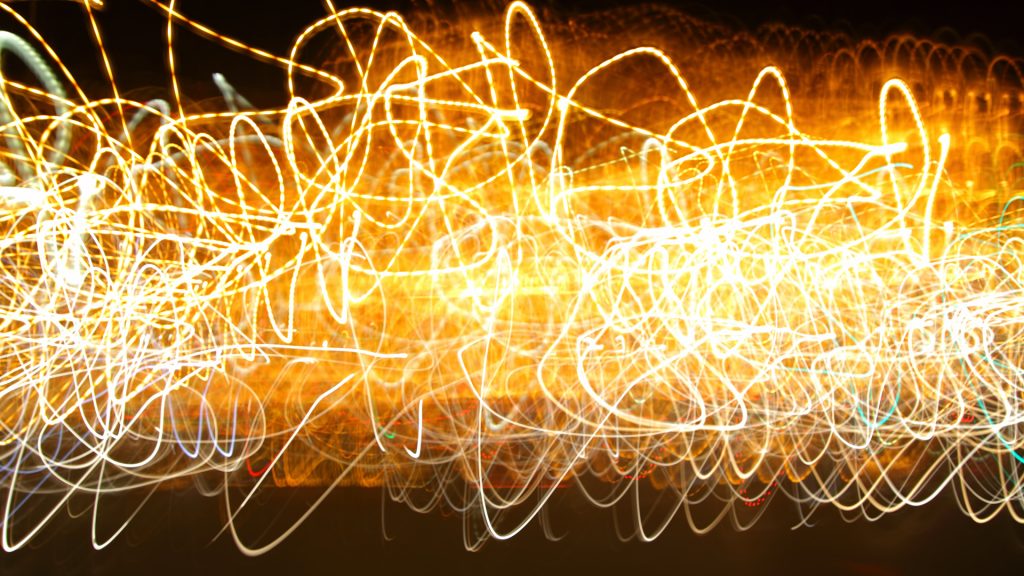
Quantum chaos does exist, as was established by pioneering work on small quantum systems by the group of young physicists at the Budker Institute under the leadership of a great scientist, Boris Chirikov
Quantum chaos and the future
Regarding quantum chaos, we are currently looking to extending our nuclear experience to the general problem of quantum signal transmission. This is a necessary and natural step on the journey towards quantum computing and other technical applications using the ideas of open quantum systems. Ideally, there should be a chain, or rather a network, of quantum elements (qubits) that transmit and process quantum information. The processing has to be fast, directional, and devoid of chaotic mixing. The general features of the appropriate mathematics are essentially the same as in theory of nuclear reactions. The first applications of this approach have already been published, looking at the signal transmission in various quantum chains or graphs.
It is pleasant to realise that nuclear physics, sometimes considered as an old and second-rate branch of physical science, has become a driving force of astrophysics, statistical mechanics, dynamical theory of chaos, accelerator techniques, medical applications, and so on. Looking back, I can only thank my good fortune for meeting Spartak Belyaev so many years ago, working at the Budker Institute for such a long time, going through a special school of the Niels Bohr Institute, and coming to the MSU 30 years ago.
Vladimir Zelevinsky
Professor of Physics
Michigan State University
+1 (517) 908 7331
zelevinsky@nscl.msu.edu
Tweet @michiganstateu
https://people.nscl.msu.edu/~zelevins/
Please note, this article will also appear in the seventh edition of our quarterly publication.

